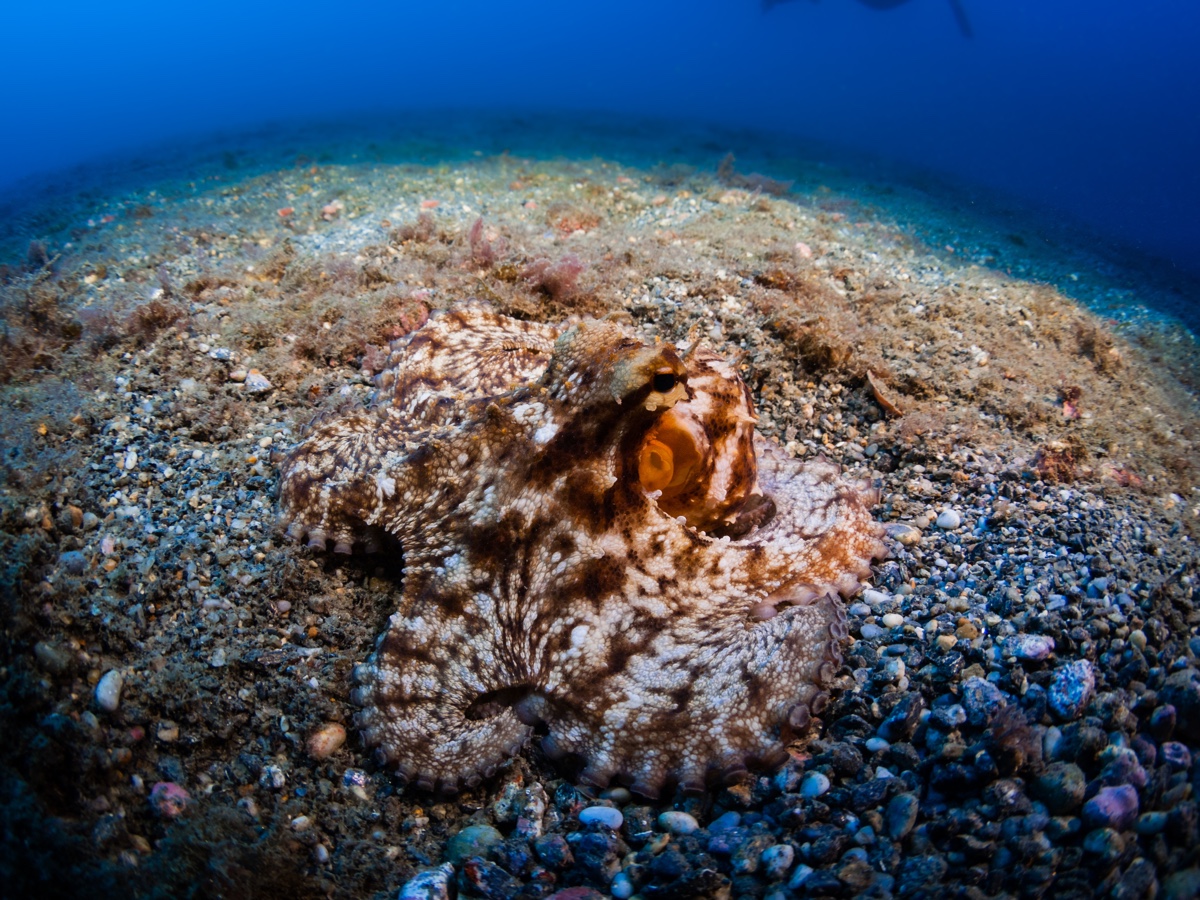A video of an octopus' hiding in plain sight before popping out to spook a diver has gone viral.
The video shows a nearly invisible octopus, seamlessly blending in with the seafloor, before turning white, floating up from its hiding place and transforming into what looks like a terrifying, bug-eyed sea monster.
It turns out that the octopus in the video belongs to a complex of species known as Octopus vulgaris, and is behaving very typically, said Roger Hanlon, a researcher at the Marine Biological Laboratory in Woods Hole, Massachusetts, who studies cephalopod camouflage. Octopus vulgaris are found throughout the world's oceans, but are particularly common in the Caribbean, said James Wood, a marine biologist who runs the Cephalopod Page.
The amazing level of camouflage isn't surprising, as that's the main way the soft-bodied cephalopods manage to stay alive, said Mike Vecchione, a research zoologist, at the National Oceanic and Atmospheric Administration/National Marine Fisheries Service National Systematics Laboratory and the Smithsonian institution. [8 Crazy Facts About Octopuses]
Camouflaging is "its primary means of defense," Vecchione told Live Science. "They're really tasty, so lots of things want to eat them."
Camouflage tricks
To hide themselves, octopuses typically rely on hundreds of thousands of tiny, pinpoint-sized pigment cells called chromatophores, Vecchione said. Muscles surround these chromatophores, and depending on the background environment, the muscles can contract to make the pigment cells look bigger or smaller. The chromatophores can also change color to match the environment. That's not all — Octopuses also modify the texture of their skin to match their surroundings, Vecchione said.

The cephalopods have a few other tricks up their sleeves. Once the camouflage stops working, the octopus in the video switches to plan B: shock, then flee as fast as possible.
Sign up for the Live Science daily newsletter now
Get the world’s most fascinating discoveries delivered straight to your inbox.
"The blanching is what we call secondary defense, after camouflage fails," Hanlon told Live Science in an email. "It is meant to be startle or threat behavior to an approaching predator. Then the octopus inks and swims away."
Masking mystery
Bizarrely, scientists still don't understand exactly how the octopus picks its camouflage.
In the video, for instance, the octopus seamlessly matches its surroundings, but it could very easily be in another, very different hiding place, and would blend in just as well there, Vecchione said. Even stranger, octopuses can match things they can't see. For instance, they don't have color vision, yet can match colors in their surroundings.
"We're not real sure how they do that," Vecchione said.
Yet cephalopods don't seem to have a set of prepared camouflages — for instance, dark hole, rocky seafloor, and the like — that they trot out for each environment.
"It seems to be more sophisticated than that," Vecchione said.
Instead, it seems they are mimicking the specific, individual details of a given environment. For instance, when scientists put a cuttlefish, a relative of the octopus, on a checkerboard, it tries to mimic the size, shape and color pattern of the squares, Vecchione said. And past research has shown that cuttlefish use humanlike visual processing to accomplish this feat. For instance, humans can often "fill in the blanks" when they see only part of an object or can translate from a simple line drawing to what it represents. And it seems cephalopods may do the same thing, Live Science previously reported.
Originally published on Live Science.

Tia is the managing editor and was previously a senior writer for Live Science. Her work has appeared in Scientific American, Wired.com and other outlets. She holds a master's degree in bioengineering from the University of Washington, a graduate certificate in science writing from UC Santa Cruz and a bachelor's degree in mechanical engineering from the University of Texas at Austin. Tia was part of a team at the Milwaukee Journal Sentinel that published the Empty Cradles series on preterm births, which won multiple awards, including the 2012 Casey Medal for Meritorious Journalism.










